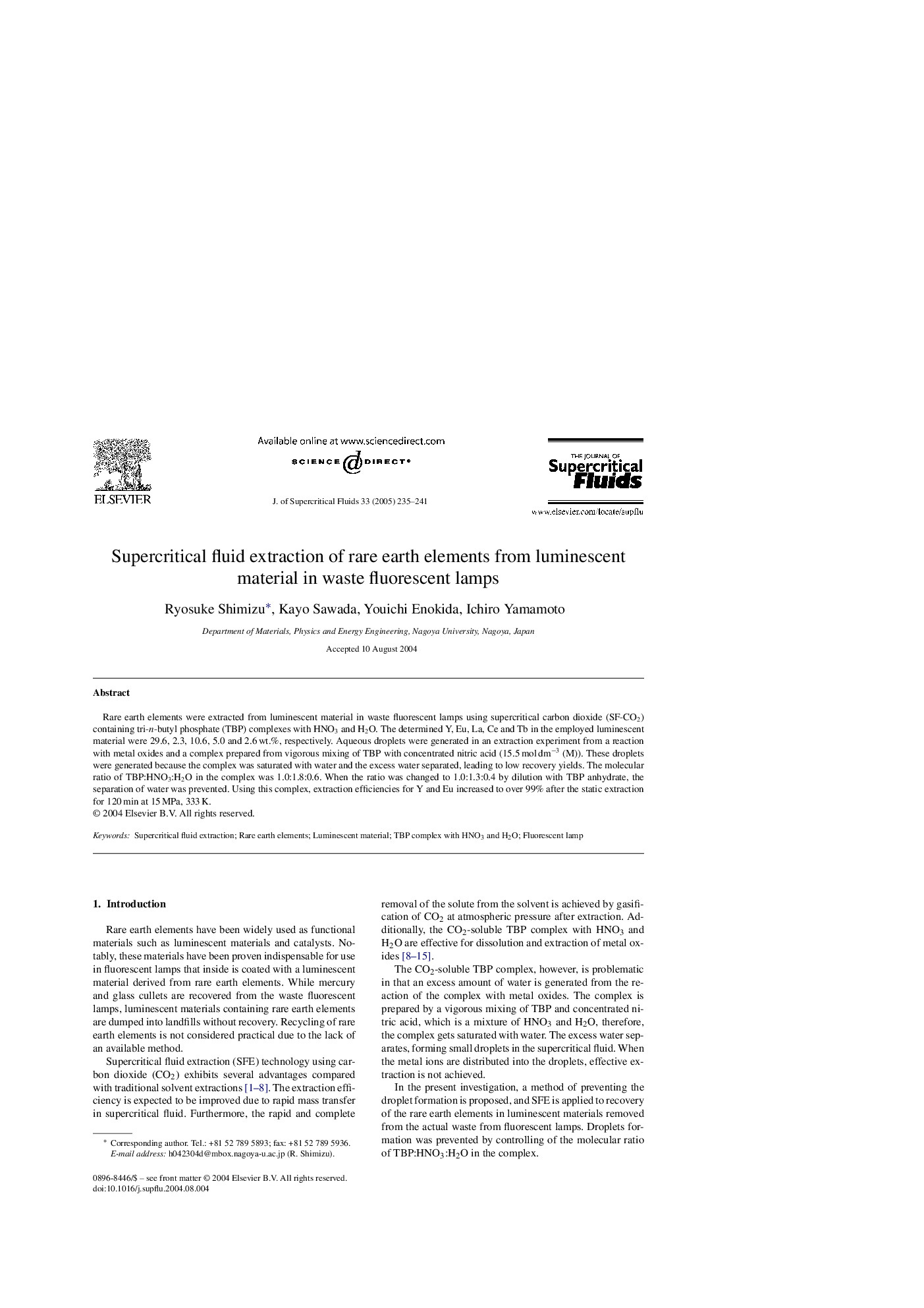| Article ID | Journal | Published Year | Pages | File Type |
|---|---|---|---|---|
| 9635842 | The Journal of Supercritical Fluids | 2005 | 7 Pages |
Abstract
Rare earth elements were extracted from luminescent material in waste fluorescent lamps using supercritical carbon dioxide (SF-CO2) containing tri-n-butyl phosphate (TBP) complexes with HNO3 and H2O. The determined Y, Eu, La, Ce and Tb in the employed luminescent material were 29.6, 2.3, 10.6, 5.0 and 2.6 wt.%, respectively. Aqueous droplets were generated in an extraction experiment from a reaction with metal oxides and a complex prepared from vigorous mixing of TBP with concentrated nitric acid (15.5 mol dmâ3 (M)). These droplets were generated because the complex was saturated with water and the excess water separated, leading to low recovery yields. The molecular ratio of TBP:HNO3:H2O in the complex was 1.0:1.8:0.6. When the ratio was changed to 1.0:1.3:0.4 by dilution with TBP anhydrate, the separation of water was prevented. Using this complex, extraction efficiencies for Y and Eu increased to over 99% after the static extraction for 120 min at 15 MPa, 333 K.
Related Topics
Physical Sciences and Engineering
Chemical Engineering
Chemical Engineering (General)
Authors
Ryosuke Shimizu, Kayo Sawada, Youichi Enokida, Ichiro Yamamoto,
